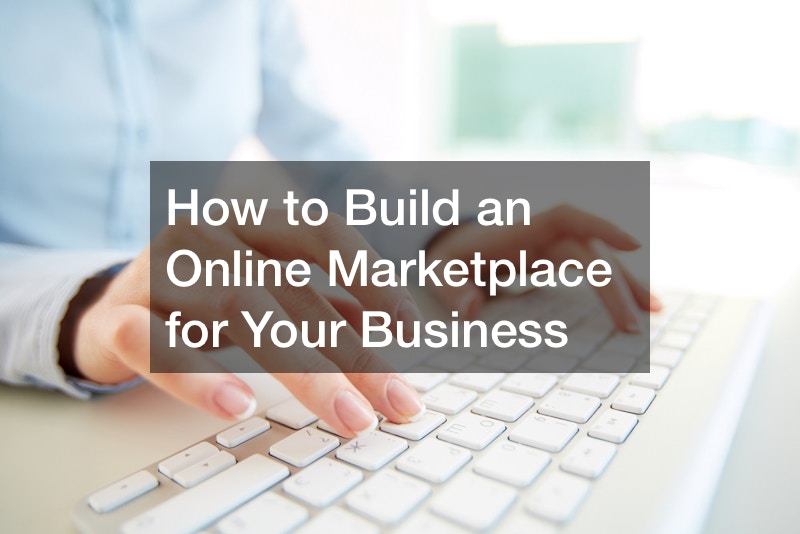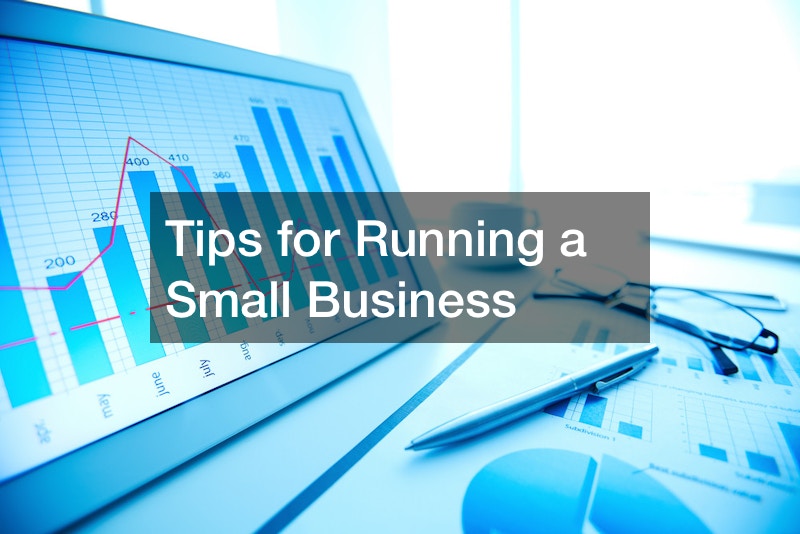
Are you ready to take your business to the next level? Do you need encouragement and inspiration? Well, look no further because we’ve got some exciting insights to share with you today. In this article, we’re going to dive into the world of online marketplaces and show you how to build one for your very own business. Whether you’re a small startup or an established company, having an online marketplace can be a game-changer.
So, grab a cup of coffee, get cozy, and let’s embark on this journey together! Get ready to unlock the secrets of creating a thriving online marketplace that will make your business shine in the digital world. Let’s get started learning more about how to build an online marketplace, shall we?
What Exactly Is an Online Marketplace and Why Should You Have One?

First, let’s quickly look at what an online marketplace is. After all, how can you build an online marketplace if you don’t understand what it is? Online marketplaces are like virtual hubs where people can showcase and sell their goods or services directly to potential customers. The cool thing about marketplaces like Airbnb is that they typically follow a peer-to-peer business model. This means that anyone, not just organizations, can both sell their stuff and buy from others, switching between these roles whenever they want.
Think of an online marketplace as a go-between that brings together sellers and buyers, such as used equipment dealers and those in need of affordable equipment. Unlike an online store that typically sells products from a single producer or distributor, a marketplace website acts as a platform where multiple sellers or distributors can offer their stuff all in one place.
It’s pretty common for existing retailers or producers to jump into the online marketplace game. Why? Well, these marketplaces provide them with more opportunities to grow and diversify their business. It’s like opening up new doors for expansion and reaching a wider audience.
Research Your Industry/Niche
Okay, before you can build an online marketplace for your business, you need to understand your industry or niche. For example, if you’re looking to offer cleaning products to dumpster rental companies so they can keep their equipment clean, you need to have a good idea of what these companies’ pain points are. Once you know your industry better, you can decide how you’re going to proceed to build your marketplace.
It’s super important to figure out what kind of products or services you want to offer on your platform. And how do you do that? Well, you gotta do some good old market research. Now, when it comes to building your marketplace, you’ve got two options on the table: the horizontal route or the vertical route. Let me explain what’s what.
First up, we’ve got the horizontal marketplace. This is like what you see with big players like Amazon. They cover a wide range of categories and products, from books to fancy electronic gadgets. It’s like a massive one-stop shop where you can find just about anything you need. The cool thing about this approach is that you’ve got a broader coverage, reaching a wide range of customers. But here’s the thing, by spreading yourself across multiple segments, you might miss out on the chance to become a bigwig in a specific niche.
Now, the other option is to go for a vertical e-commerce platform. This means you’re gonna focus on a specific niche or cater to a particular group of users. So, instead of trying to be a jack of all trades, you’re becoming a master in a specific area. It’s like honing in on a particular passion or interest and providing a killer experience for those who are into it.
Get To Know Your Target Audience

In addition to learning more about your target audience, you also need to know your target audience really well. You can’t expect to build an online marketplace that works if you can’t, with confidence, say you know what makes your audience tick. Let’s say you sell kitchen countertops and you’re trying to attract customers. Having information about selecting new countertops and guides to understanding the various materials to choose from, for example, can get more people interested in your marketplace.
Make sure to put yourself in your customers’ shoes. Think about what they really want and need. Once you’ve got that figured out, you’re golden! When you cater to their desires, you’ll totally exceed their expectations. And you know what happens then? Boom! Happy customers with big smiles, all thanks to your awesome product.
Define Your Marketplace’s Functionality
An important part of understanding how to build an online marketplace that will work for your business is knowing and being able to define its functionality. Let’s quickly discuss the must-have features for your awesome marketplace! These functions are going to make your marketplace a hit for both buyers and sellers.
First up, we got the product page. This bad boy is where you give potential buyers the full lowdown on what you’re selling. Rock their world with high-quality photos, snazzy videos, and detailed descriptions. Remember, every little detail counts! Next in line is the shopping cart. Since you’re creating an e-commerce platform, this one’s a top priority. Give your users a seamless and convenient shopping experience by allowing them to add items to their cart and breeze through the checkout process.
Now, let’s talk about security. Keep your marketplace website locked down like Fort Knox! Get yourself some SSL certificates, set up two-factor authentication, and throw in some firewalls for good measure. We gotta keep those sneaky cyber villains at bay! Moving on to payment methods. Give your users some flexibility by offering a variety of payment options. PayPal, Stripe, Braintree, and WePay are popular choices that’ll make transactions a breeze for your customers.
Oh, and don’t forget the search feature. With all the cool products your multi-vendor platform has to offer, it’s essential to help users find what they’re looking for. Stick that search box somewhere noticeable, like in the top right or top left of your pages. Make it easy for folks to find their treasure! Last but not least, let’s talk about wishlists. This nifty feature allows shoppers to create collections of items they want to buy later. It’s like a virtual shopping spree where users can save their favorite stuff and come back for it when they’re ready to hit that buy button.
Identify Your Business Model

You need a suitable business model if you want your online marketplace to be effective and work well. Different companies will want different models as there isn’t really a ‘one size fits all’ approach to this, even within the same industries. For example, tile stores will have different goals and marketing ideas than building supply stores or a dedicated granite counter top supplier.
A business that sells cabinets won’t embrace the same business model for their online market place as crane rental services, and this rule applies to your business as well. Here are the business models you’ll be able to choose from: First up, we’ve got the commission. This sneaky little guy takes a cut from each transaction that happens on your platform. It’s like a small fee for providing the space and bringing buyers and sellers together.
Next in line is the listing fee. This one’s charged to vendors when they publish their items on your marketplace. The cool thing is, the higher the price of the product or service, the higher the listing fee. It’s like paying a little extra to show those fancy high-ticket items, and this is why you need to build an online marketplace that is well-designed. A great listing fee is useless without a marketplace that can accommodate creative ideas and strategies.
Now, let’s talk about the subscription fee. This is a business model where sellers pay a charge to get access to your e-commerce platform. It usually comes in the form of monthly or yearly fees, and in return, sellers get a set of awesome benefits. It’s like being part of an exclusive club with special perks.
Then we’ve got the advertising fee. This one’s all about promoting items on your marketplace through third-party advertisers. They pay a fee to get their products in front of your users, and it’s a win-win for everyone involved. Now, check out lead fees. This revenue model means that users pay to access detailed information about a desired item. It’s like paying a small fee to unlock all the juicy details before making a purchase decision.
Last but not least, we’ve got premium membership. This one’s all about giving users extra features and exclusive content. They pay a fee to upgrade their membership and get access to all the cool stuff you offer. It’s like leveling up and unlocking a whole new world of awesomeness.
Start Promotion

Once you know how to build an online marketplace, you have to start with the promotion or all your hard work will be for nothing. To make it a hit, you have to assemble a dream team of experienced SEOs and content experts. These folks are gonna work their magic to bring in the traffic and make your platform shine.
Of course, this is where an understanding of your audience and industry comes into play. You need to know how to promote your marketplace to appeal to your audience. So, let’s say you’re selling trailer parts, you need to be interesting to your audience and not to someone in a different industry, like local hot tub dealers. Can you imagine the confusion visitors to your online marketplace will experience if you don’t promote it correctly?
Here’s how you can kick off your promotion journey:
Search and develop potential traffic pages: Start by identifying those pages on your marketplace that have the potential to attract a ton of visitors. Think about what users are searching for and create content that matches their needs. It’s like finding those golden opportunities to grab people’s attention.
Technical optimization of the marketplace: Get your tech game on point! Optimize your marketplace to ensure it’s running smoothly and efficiently. Pay attention to things like site speed, mobile-friendliness, and easy navigation, as it is very important to build an online marketplace that performs well. You want users to have a seamless experience when they visit your platform.
Identify competitors and refine your semantic core: Take a peek at what your competitors are up to. Analyze their strategies and figure out how you can stand out from the crowd. Refine your semantic core by identifying relevant keywords and phrases that will make your marketplace shine in search results.
Analyze and compile metadata: Metadata is like the behind-the-scenes superhero of your content. It includes things like titles, descriptions, and tags that help search engines understand what your pages are all about. Craft compelling and keyword-rich metadata to boost your visibility and attract those curious clickers.
Compile technical requirements for content: Get clear on what you expect from your content team. Define the guidelines and requirements for creating high-quality content that aligns with your brand and resonates with your target audience. It’s like setting the stage for content greatness.
Draw up a link promotion strategy: Building a solid network of backlinks can do wonders for your marketplace’s visibility. Create a strategy to reach out to other websites and collaborate on content or exchange links. The more reputable sites that link back to yours, the more authority and traffic you’ll gain.
Analyze promotion results and optimize your workflow: Keep an eye on how your promotion efforts are paying off. Use analytics tools to track your progress, measure key metrics, and identify areas for improvement. Continuously optimize your workflow based on the insights you gather, making adjustments to maximize your promotional success.
You’ve made it to the end of our guide on how to build an online marketplace for your business. Hopefully, you’re feeling inspired and ready to tackle this exciting venture head-on. Remember, building an online marketplace may seem like a daunting task at first, but with the right knowledge and a sprinkle of determination, you can turn your business into an e-commerce powerhouse.
As you venture into the world of online marketplaces, keep in mind that success doesn’t happen overnight. It takes time, effort, and a willingness to adapt to the ever-changing digital landscape. Stay open to learning, be proactive in engaging with your customers, and don’t be afraid to experiment. To build an online marketplace, you need to realize you’re on a continuous journey of growth and improvement.



